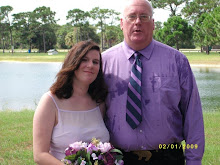There is a lot more to it sometimes than just typing what the doctor says. You actually have to understand what they are talking about, too. Sometimes a doctor will say the wrong word, and you need to be able to realize that there was an error made. For example, a doctor may say something like "The patient has a history of hyperglycemia, and fingerstick blood sugar today was 50."
Okay, so for those of you who do not know, hyperglycemia would mean high blood sugar. Hypoglycemia would be low blood sugar. And also, for those of you who may not know, 50 is a LOW blood sugar. So even though the doctor may have said hyperglycemia, you would have to know to type hypOglycemia.
See, it is not as easy as you thought, is it.
Part three to come tomorrow!
Tuesday, August 28, 2007
Tuesday, August 21, 2007
You're a what???? Part 1
Medical transcriptionist. It does not seem like a lot of people even know what this is. Medical transcription is a widely misunderstood field. I have gotten "Oh, so you are a secretary?" No, not even close. I am a Health Information Professional. Gotta love how everything has gotten so PC, right??
For those of you who are wondering, think about it this way. You know how, when you go to the doctor, s/he scribbles all kinds of things into that folder they call your chart? Well, after you leave, the doctor reads all that stuff off of the scribble-chart, either into a microcassette, or a telephone system, or a digital recorder. Then, they do that for every other patient they see that day. And then, that information is sent to a medical transcriptionist, who has to take all of the babbling, burping, chewing, and other wonderful sounds they slip in there while they are dictating (that is what "reading" all that stuff is called) and turn it into a legible, complete medical record. This is a legal document, so there is very little room for error.
Part two to come later.
For those of you who are wondering, think about it this way. You know how, when you go to the doctor, s/he scribbles all kinds of things into that folder they call your chart? Well, after you leave, the doctor reads all that stuff off of the scribble-chart, either into a microcassette, or a telephone system, or a digital recorder. Then, they do that for every other patient they see that day. And then, that information is sent to a medical transcriptionist, who has to take all of the babbling, burping, chewing, and other wonderful sounds they slip in there while they are dictating (that is what "reading" all that stuff is called) and turn it into a legible, complete medical record. This is a legal document, so there is very little room for error.
Part two to come later.
Subscribe to:
Posts (Atom)

